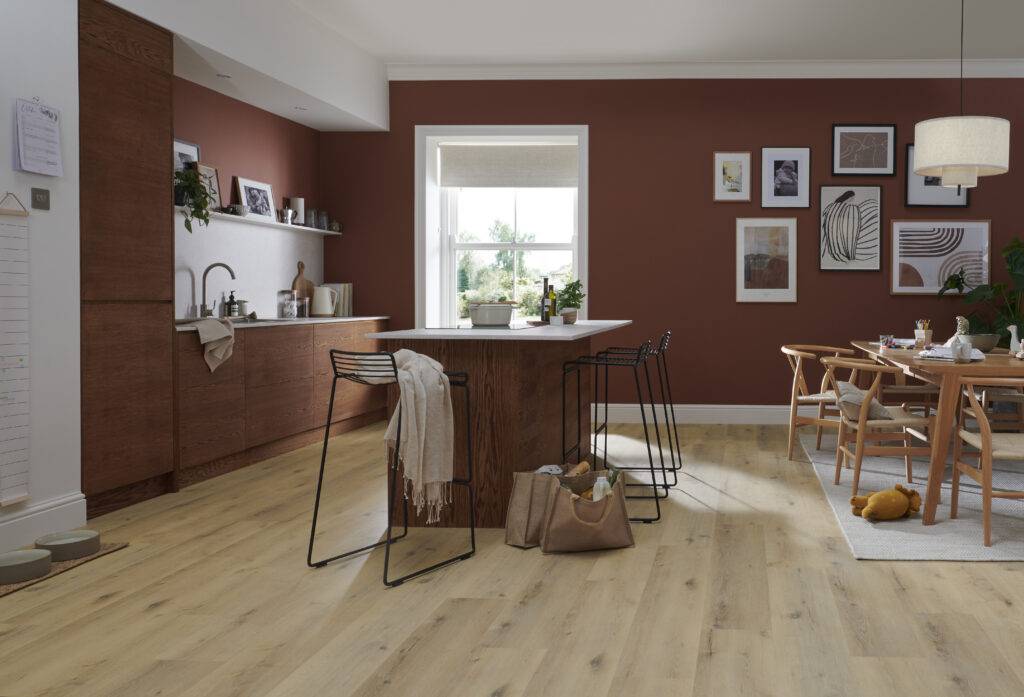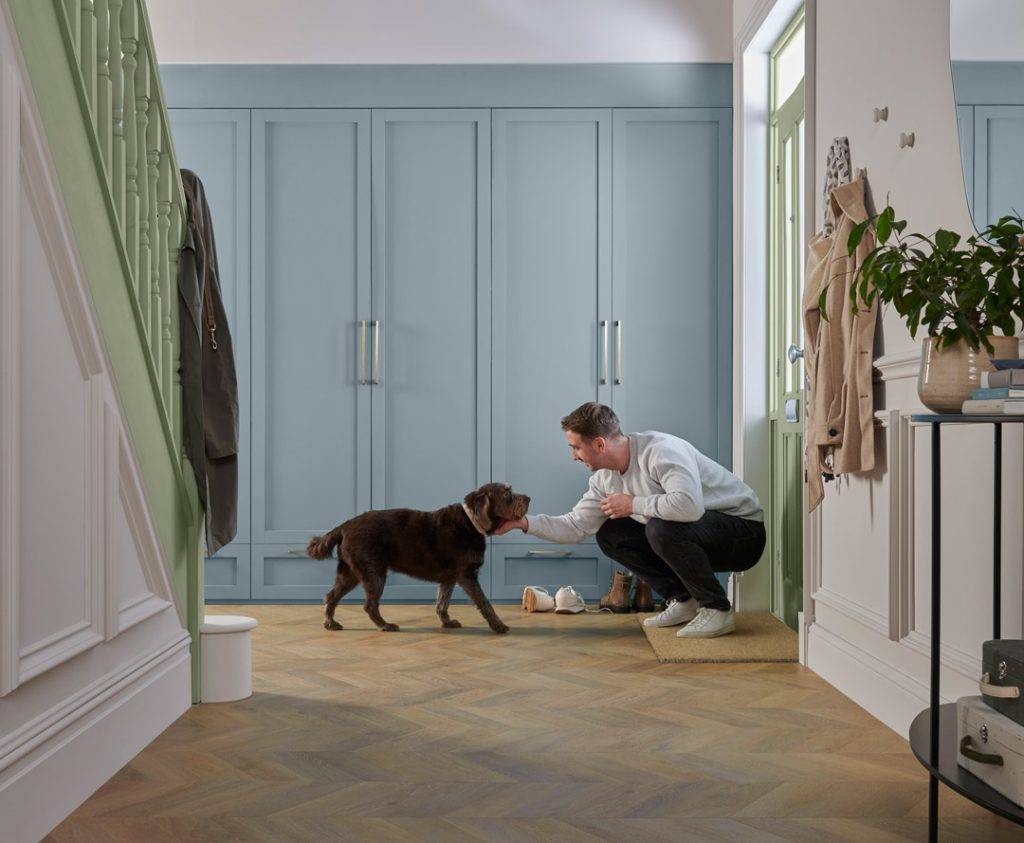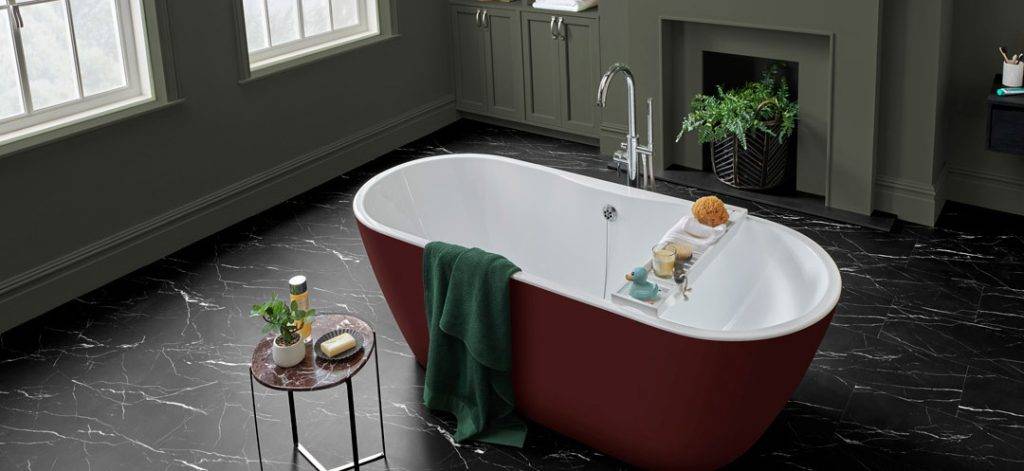Building homes from the floor up
Up to 3 FREE Samples
Building homes from the floor up
Up to 3 FREE Samples
Something that is frequently raised by potential customers of Luvanto is the scratch resistance of vinyl floors. Whilst people may have questions or concerns about vinyl flooring, we believe the issue is misunderstood, so we have created this article to help.
Read on if you’re interested in the breakdown of what makes up a vinyl floor, its important protective layer, the wear layer, and why it is still a highly suitable flooring option for most situations
This is the topmost layer of LVT flooring which comes in different levels of thickness. If scratches are what you want to avoid, then you need to check to see if a wear layer exists on your product, and how thick it is.
Let’s look at the quality of the wear layer across both standard and luxury vinyl flooring.
Standard sheet vinyl is renowned for being incredibly cheap whilst having both a decent look and high water resistance. However, it’s likely because of this type of vinyl that the scratch concern exists at all.
Standard sheet vinyl comes with 3-4 layers, each having its purpose:
The vast majority of standard vinyl comes without a wear layer. This means there’s little to protect the vinyl against scratches, or even rips. Once the vinyl is scratched, there is no repair – It must be replaced.
Luxury Vinyl Tile is loved for its realistic mimicry of surfaces like stone or wood, as well as extra protection and print quality. It gains both of these traits by having extra layers. They will consist of the following:
The wear layer for luxury vinyl depends on the product itself. Floors made for residential areas can be from a minimum R9 to R10 and come with a minimum 0.3mm wear layer, whilst heavy domestic and commercial floorings start at 0.55mm.
The thicker the wear layer, the more defence it has against damage. On top of that, the application of proper care and maintenance products will prolong the visual look of the floor further (more on that in the next section.)
Wear layer thickness varies from manufacturer to manufacturer. So what is better about Luvanto?
As a standard, all Luvanto floors come with a 0.55mm wear layer. This means that Luvanto floors will have the protection of vinyl floors in a commercial setting.
On top of this, Luvanto has a product range named Luvanto Endure. This boosts the wear layer to a class-leading 0.7mm.
Possibly the absolute best thing you can do to maximise both the longevity and quality of your floor is to have it laid by a professional, approved or certified installer. Luvanto recommends finding someone from the “National Institute of Carpet and Floor Layers”, or “Floor Skills”. Both schools offer certification that proves the fitters have skill and merit.
The reason it’s best to go with certified professionals is simple: subfloor preparation.
The subfloor is probably the largest factor in how vulnerable your floor will be. Debris beneath LVT flooring will cause indentations and pressure. Point loading in these areas, from above and below act against each other, and this can cause the floor to fail. By employing an approved or certified installer, they can advise the best way to provide a sustainable floor.
Luvanto offers a Floor and Maintenance Care Kit. This care kit comes with felt pads for your furniture, which is the most common way these strong floors are scratched, as well as solutions that add a top-coat to the flooring.
These additional coats are designed to reinforce the wear layer. Whilst your professional installer may do this for you on the first fitting, it’s best to renew it periodically to retain the strong finish.
Vinyl’s scratch resistance depends entirely on the wear layer. As long as it has one, there is much that can be done to prevent these issues. That being said, do not believe the tales that the thickness of a wear layer doesn’t matter. There IS a difference between 0.3mm, 0.55mm and 0.7mm wear layers, as they have been put through a castor wheel chair test. The lesser the thickness of the wear layer, the weaker it is.
Recently Viewed
Related Articles
Stylish and Durable Hallway Flooring Ideas
Kitchen Flooring Ideas: Beauty and Durability for the Heart of Your Home
Practical and Pretty Bathroom Flooring Ideas
5 Flooring Ideas for Busy Families
Grey LVT: Trends and Styling Tips for your Home
How much does LVT flooring cost?
Clay Earth
Midnight Olive
Coastal Cottage




Trends come and go but a Luvanto floor is forever.
Keep your interiors looking show-home worthy with our colour and trend inspiration. As experts in colour forecasting and pairings, we match the latest trends and colours with each of our flooring shades so you can stay tickled pink with your décor all year round.
Flooring
Inspiration
Where To Buy
Help And Support
Copyright © 2024 Luvanto - QA Flooring Solutions Ltd. All Rights Reserved.
QA Flooring Solutions Ltd is a company registered in England
Registered Office: Unit 2 Hurricane Drive, Speke, Liverpool, L24 8RL
Company Registration Number: 07870268 | VAT Number: 852026449
| Cookie | Duration | Description |
|---|---|---|
| cookielawinfo-checkbox-analytics | 11 months | This cookie is set by GDPR Cookie Consent plugin. The cookie is used to store the user consent for the cookies in the category "Analytics". |
| cookielawinfo-checkbox-functional | 11 months | The cookie is set by GDPR cookie consent to record the user consent for the cookies in the category "Functional". |
| cookielawinfo-checkbox-necessary | 11 months | This cookie is set by GDPR Cookie Consent plugin. The cookies is used to store the user consent for the cookies in the category "Necessary". |
| cookielawinfo-checkbox-others | 11 months | This cookie is set by GDPR Cookie Consent plugin. The cookie is used to store the user consent for the cookies in the category "Other. |
| cookielawinfo-checkbox-performance | 11 months | This cookie is set by GDPR Cookie Consent plugin. The cookie is used to store the user consent for the cookies in the category "Performance". |
| viewed_cookie_policy | 11 months | The cookie is set by the GDPR Cookie Consent plugin and is used to store whether or not user has consented to the use of cookies. It does not store any personal data. |
Building homes from the floor up
Up to 3 FREE Samples